How to integrate Google Analytics data into Chili Piper
Learn how to capture Google Analytics data with each new booking in Chili Piper, so you can track where your leads are coming from.
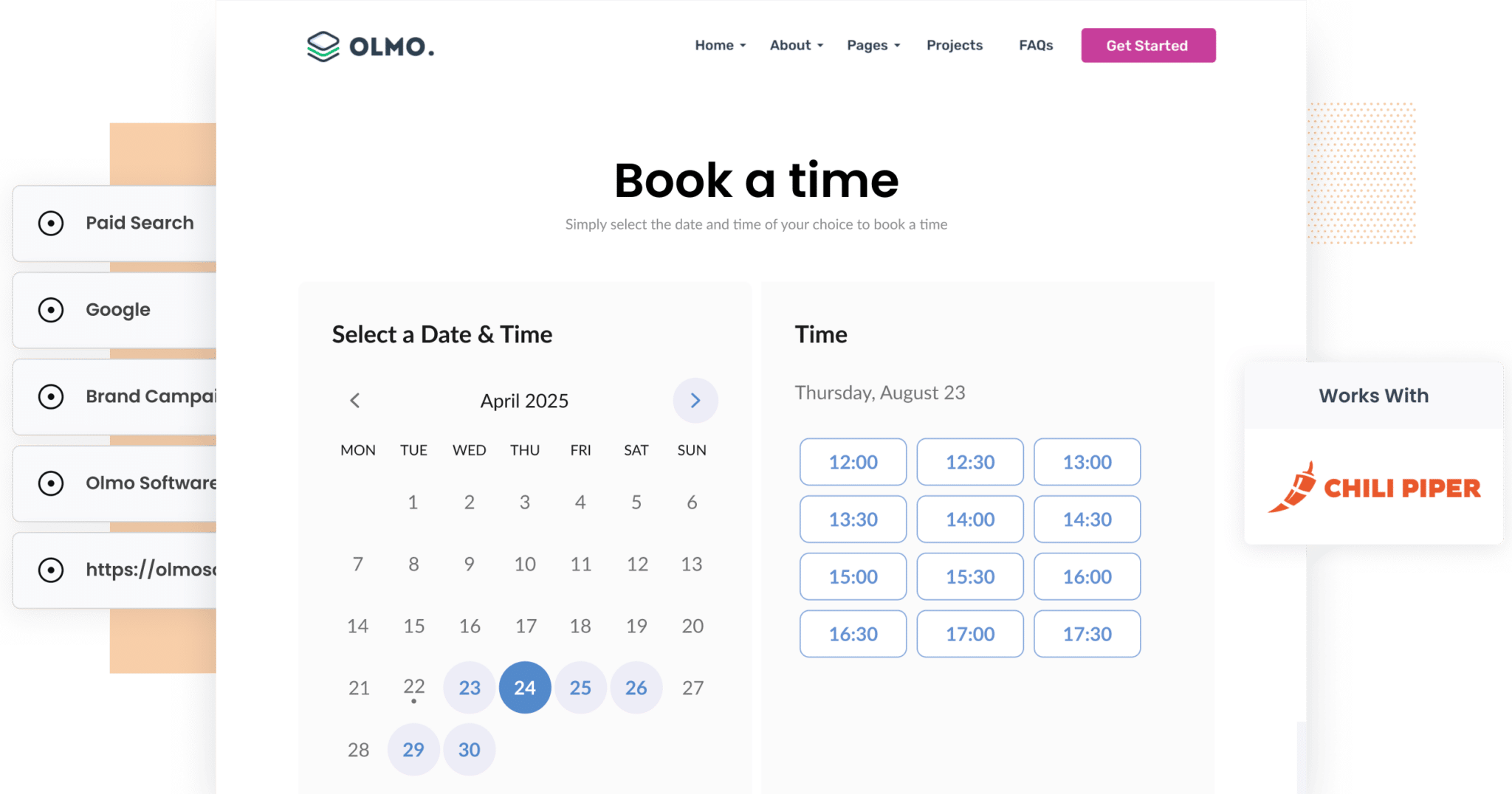
If you're generating leads through your website, you probably want to know exactly where those leads are coming from and which marketing channels are performing best.
While tools like Google Analytics can tell you how many visitors are landing on your site from different channels (like Paid Search, Organic Search, or Social), they don’t tell you how many of those people actually book a meeting using Chili Piper, or which of them eventually become paying customers.
The good news? There’s a way to get this data.
In this guide, we’ll show you how to use a tool called Attributer to capture Google Analytics data with every meeting booked through Chili Piper on your site.
We’ll also walk you through the types of reports you can create with this data, and how you can use those insights to optimise your marketing, drive more qualified bookings, and grow your customer base.
What is Attributer?
Attributer is a small piece of code you add to your website to help you track where your leads and customers are coming from.
When someone visits your site, Attributer analyses technical data like UTM parameters, referral sources, and other key indicators to figure out how they arrived.
It then groups that visitor into a marketing channel, like Paid Search, Organic Search, Paid Social and more (similar to how Google Analytics categorises traffic).
This attribution data is stored in the visitor’s browser. Then, when they book a meeting using your Chili Piper form, Attributer automatically passes through that source data along with the booking details.
That information is then saved with the booking in Chili Piper, and from there, you can send it to your CRM or other connected tools and use it to understand where your leads and customers are coming from.
4 steps for capturing Google Analytics data in Chili Piper
When you use Attributer, capturing Google Analytics data in Chili Piper is straightforward. All you’ll need to do is follow these four steps:
1. Install Attributer on your website

Sign up for a free 14-day free trial and you’ll receive a small bit of code you need to add to your website.
How you do this will differ depending on what website builder you use (WordPress, Webflow, Framer, Squarespace, Wix, etc.), but you can find instructions for all the popular website builders here.
2. Attributer automatically passes through Google Analytics data
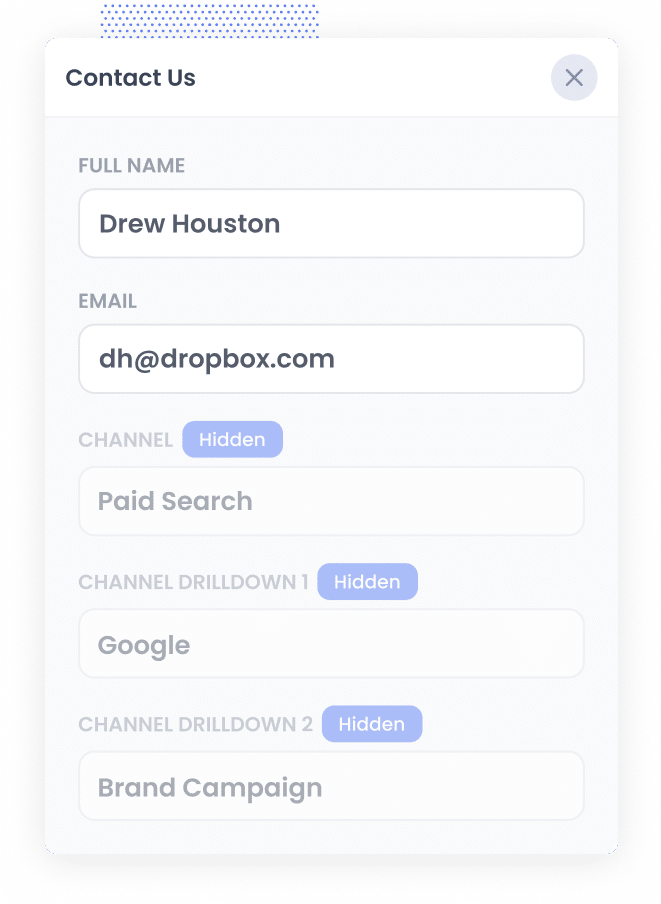
When a potential client books a meeting via the Chili Piper form on your website, Attributer passes through information about how that person found your site.
To show how this works, let’s look at an example:
Say you’re on the marketing team at a SaaS company. A prospect clicks one of your Google Ads, visits your homepage, then books a demo through your embedded Chili Piper form. Attributer would populate hidden fields like this (depending on what UTM parameters you put behind your ad):
- Channel: Paid Search
- Channel Drilldown 1: Google
- Channel Drilldown 2: Brand Campaign
- Channel Drilldown 3: CloudSync Pro
Attributer would also capture the visitor’s initial landing page (e.g. www.cloudsyncpro.com/solutions/file-sharing) and its category (e.g. solutions), giving you insight into both the source and the content that triggered the booking.
3. Google Analytics data is captured by Chili Piper
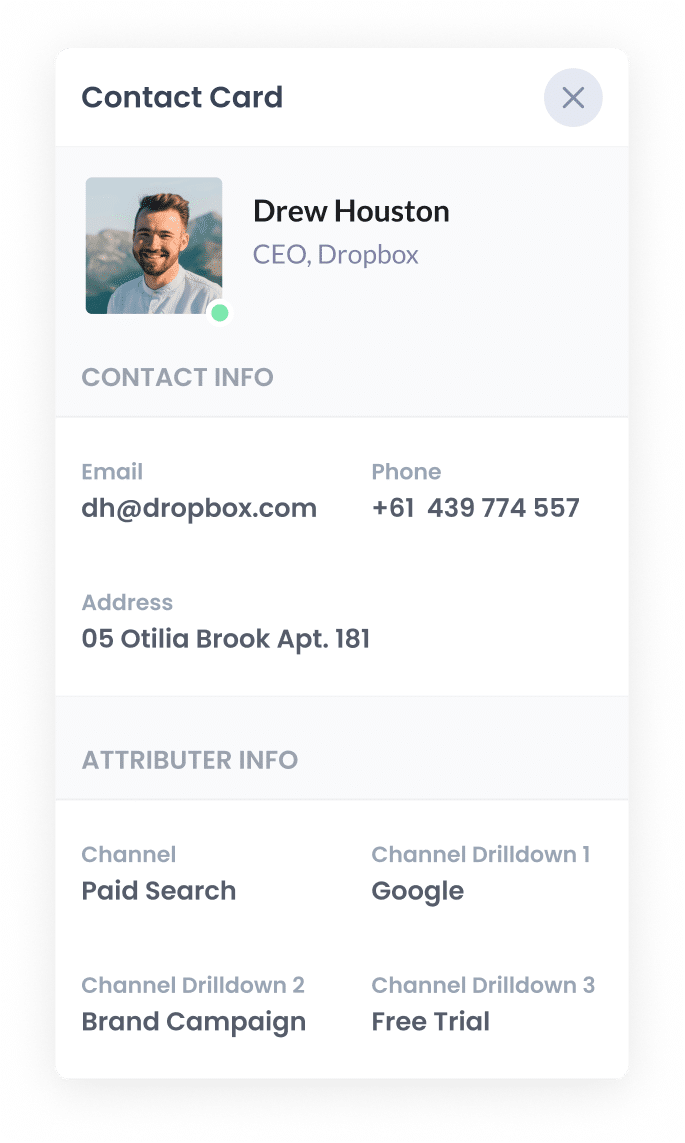
Once the lead completes their booking, the Google Analytics data that Attributer passed through is captured in Chili Piper alongside all the other booking information (like the lead's name, email, phone, etc).
From there, you can use Chili Piper’s native integrations, or connect through third-party tools like Zapier, to send that data to your CRM, a spreadsheet, or other systems in your marketing and sales stack.
4. Run reports to see where your leads are coming from
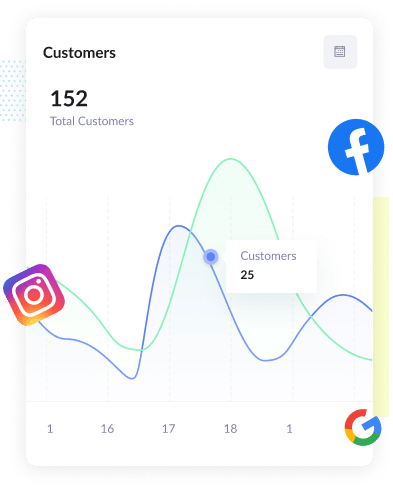
Once the attribution data is in your CRM or spreadsheet, you can take advantage of the tools' built-in reporting features to create dashboards and charts that show exactly where your bookings are coming from.
For example, you could build reports that reveal:
- How many bookings were driven by your Google Ads
- How many came through Facebook Ads
- How many meetings were booked thanks to your SEO efforts
These insights make it easy to see what’s working, and help you double down on the marketing channels that are actually driving results.
What data gets captured in Chili Piper
Attributer captures information about how a lead arrived at your website (Channel) and what content attracted them there (Landing Page).
1. Channel
With Attributer, marketing channel data for every Chili Piper booking is captured automatically. It not only tracks which high-level channels are bringing in leads, like Paid Search, Paid Social, Organic Search and more, but also collects detailed insights that help you understand the full picture.
For instance, if a lead comes in via Paid Search, Attributer doesn’t just log the Channel, it also captures the specific campaign, ad group, keyword and other valuable details, giving you everything you need to assess performance and optimise your strategy.
2. Landing Page Data
As highlighted in the SaaS example earlier, Attributer also records the first landing page a visitor arrives on, as well as the broader category that page falls under.
This means you can easily identify which content on your website (like blog posts, service pages, or landing pages) is driving the most Chili Piper bookings, helping you double down on what’s working and improve what’s not.
4 example reports you can run when you capture Google Analytics data in Chili Piper
Before creating Attributer, I spent over 15 years leading marketing teams across various organisations (mostly in B2B SaaS).
During that time, I ran countless reports to work out which marketing activities were actually driving results, and where we should focus our time, budget and energy to scale the business.
Below, I’ve shared three of the most valuable reports I relied on, each of whichcan be easily created once you’re capturing Google Analytics data through Chili Piper and pushing it into your CRM or analytics tools.
1. Leads by Channel

Whether you call them leads, bookings, or meetings, knowing where they come from is important if you want to generate more of them.
This report helps by showing you how many leads or bookings you’re getting each month, broken down by the marketing channel they originated from.
It gives you a clear picture of what’s working and what’s not, and enables you to shift more time and budget into the channels that are delivering results.
2. Opportunities by Google Ads campaign
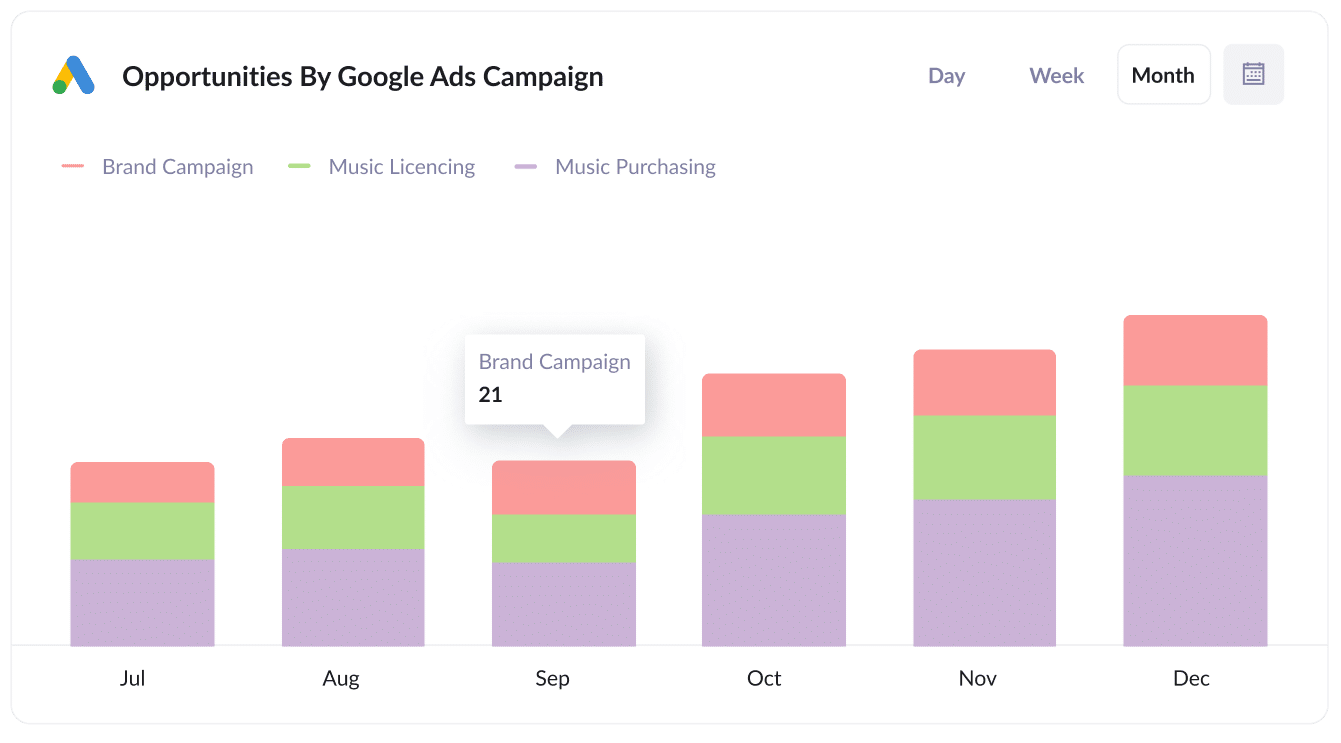
If you’re running Google Ads, you’re probably juggling multiple campaigns, each targeting different audiences, offers, or parts of the funnel.
This report gives you a month-by-month breakdown of how many Sales Opportunities each campaign is generating.
With this report, you can identify which campaigns are driving the most value and focus on them accordingly (like by allocating more budget to them, or optimising the ad copy).

If you’re advertising on Facebook/Meta, chances are your ads are also being shown across their broader network, like Instagram, Messenger and WhatsApp.
That’s why it’s important to break down performance by network, which this report helps you do. It shows how many customers you’re acquiring from each platform, month by month.
With this insight, you can make smarter decisions about where to focus your ad spend, which networks are worth investing in, and how to optimise your campaigns for even better results.
4. Revenue from Organic Search by search engine
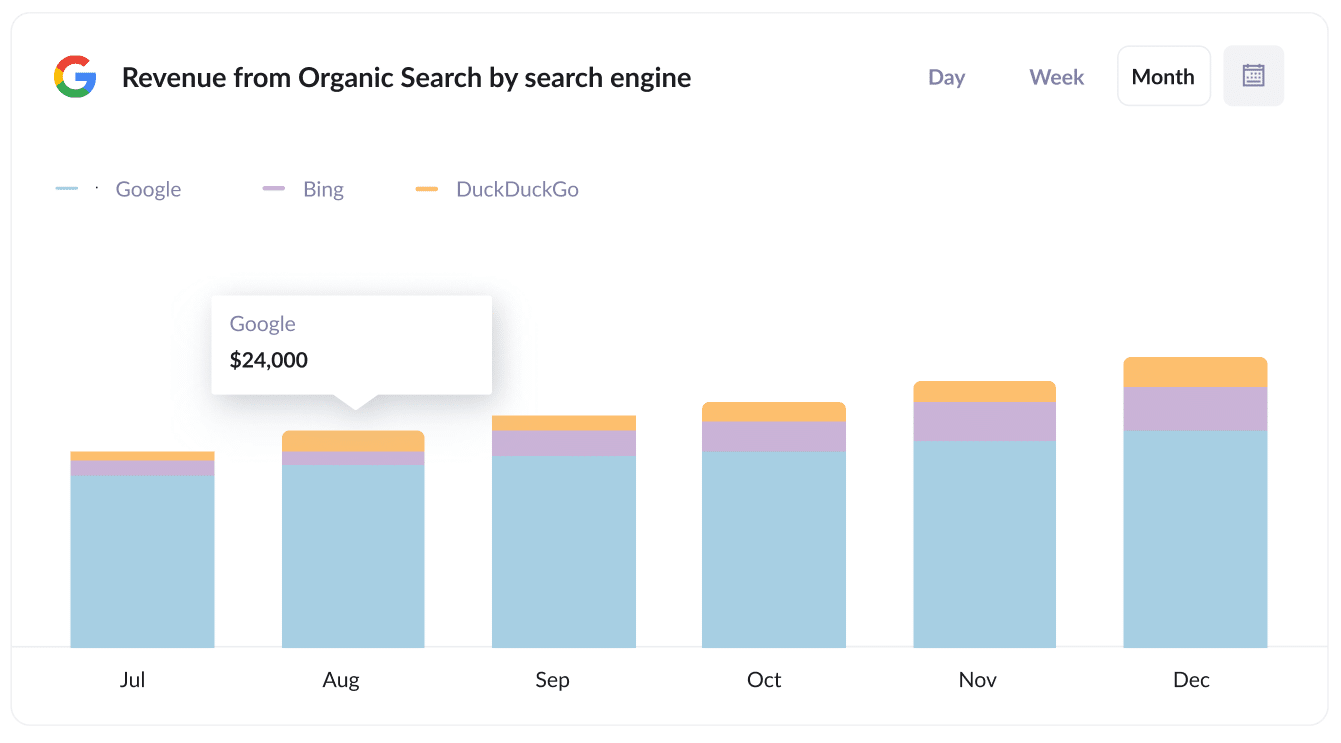
This report gives you visibility into how much revenue is being generated from customers who found your site via Organic Search, whether that’s through Google, Bing, Yahoo, DuckDuckGo, or another search engine.
With this data, you can better understand the ROI of your SEO strategy, identify which search engines are delivering the most value, and spot trends in performance over time, helping you refine your efforts and maximise results.
Wrap up
Attributer is a great solution for capturing Google Analytics data alongside of your Chili Piper bookings.
With this data flowing into your CRM and other tools, you can easily run reports that reveal which marketing efforts are driving the most bookings, and more importantly, which ones are converting into real customers and revenue.
Best of all, getting started is completely free and takes less than 10 minutes to set up. Start your 14-day trial of Attributer today!
Get Started For Free
Start your 14-day free trial of Attributer today!

About the Author
Aaron Beashel is the founder of Attributer and has over 15 years of experience in marketing & analytics. He is a recognized expert in the subject and has written articles for leading websites such as Hubspot, Zapier, Search Engine Journal, Buffer, Unbounce & more. Learn more about Aaron here.
